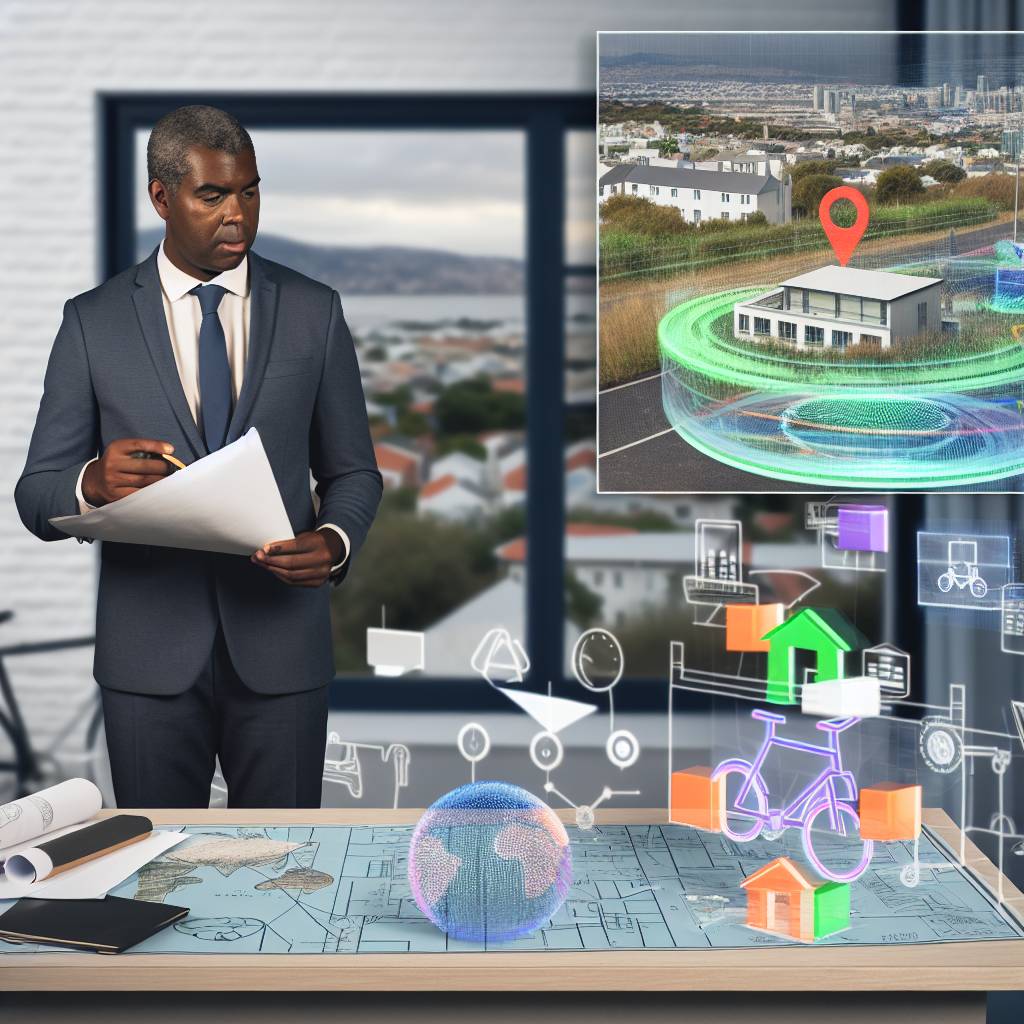Introduction to Urban Mobility Planning and its Importance
Urban mobility planning shapes how people move in cities.
It focuses on creating efficient networks for transportation.
This field is vital for tackling urban congestion.
Increased urbanization demands smarter mobility solutions.
Professionals in this field analyze traffic patterns and trends.
They must consider the diverse needs of city inhabitants.
Urban mobility planning also addresses environmental concerns.
This includes reducing carbon footprints from transportation.
Moreover, it promotes public transit and non-motorized options.
Planning enhances accessibility for all community members.
Collaboration among stakeholders is crucial for success.
Government agencies, businesses, and citizens all play roles.
Effective communication fosters shared goals and visions.
Ultimately, urban mobility planning helps design smarter cities.
Smart cities leverage technology to improve user experiences.
Personalized UK Career Consulting
Receive tailored career guidance designed just for you. Get actionable steps and expert support to boost your career in 1-3 days. Take control of your career now.
Get StartedInnovations include real-time data analysis and intelligent systems.
Thus, careers in urban mobility planning are increasingly relevant.
These careers contribute to creating sustainable urban futures.
Inspiration drives continuous improvement in transportation systems.
As cities evolve, so too must our approaches to mobility.
Key Roles and Responsibilities of Urban Mobility Planners
Defining Urban Mobility Strategies
Urban mobility planners define strategies for efficient transportation systems.
They analyze existing transportation networks and identify areas for improvement.
Additionally, they assess the needs of various stakeholders such as residents, businesses, and government bodies.
Data Collection and Analysis
Planners collect data on traffic patterns and demographics to inform their decisions.
They utilize surveys, GPS data, and traffic counts to gather insights.
This analysis helps planners make evidence-based recommendations for urban mobility solutions.
Community Engagement
Effective urban mobility planning requires robust community engagement.
Planners organize public meetings to gather feedback on proposed plans.
This input ensures that the needs and concerns of the community are addressed.
Your Dream Job Starts with a Perfect CV
Get a tailored CV and cover letter that captures your unique strengths and stands out in your industry. Let us help you make an unforgettable first impression.
Get StartedMoreover, it fosters transparency and trust between residents and planners.
Collaboration with Various Departments
Urban mobility planners collaborate with departments such as transportation and urban development.
This collaboration is crucial for designing integrated mobility solutions.
Furthermore, they work with environmental agencies to assess sustainability impacts.
Implementation of Mobility Solutions
After planning, they oversee the implementation of mobility projects.
This may include the design of bike lanes, public transit routes, and pedestrian pathways.
Planners ensure that projects align with city regulations and standards.
Evaluation and Adjustment of Plans
Urban mobility planners also evaluate the effectiveness of implemented projects.
They track performance metrics and identify areas for further improvements.
As a result, they regularly adjust plans based on changing urban dynamics.
Education and Skills Required for a Career in Urban Mobility Planning
Academic Background
A degree in urban planning sets a solid foundation for a career in mobility planning.
Many professionals also hold degrees in civil engineering or geography.
Furthermore, courses in transportation systems are increasingly valuable.
Additional qualifications in environmental science enhance understanding of sustainable practices.
Optimize Your LinkedIn for Success
Boost your LinkedIn profile with a professional bio, keyword-rich headline, and strategic recommendations that attract recruiters. Stand out from the crowd and get noticed.
Optimize NowEssential Skills
Strong analytical skills are crucial for assessing transportation needs.
Creative problem-solving abilities help develop innovative mobility solutions.
Proficiency in geographic information systems (GIS) is necessary for mapping and analysis.
Collaboration skills foster teamwork with stakeholders and community members.
Understanding Policy and Regulation
Knowledge of local, state, and federal transportation policies is vital.
Regulatory frameworks shape the planning and implementation of mobility solutions.
Staying updated on policy changes ensures compliance and effectiveness.
Technical Proficiencies
Familiarity with software tools enhances project planning and simulation capabilities.
Data analysis skills are important for evaluating transportation trends.
Mastering project management software aids in overseeing development timelines.
Interpersonal Abilities
Strong communication skills facilitate effective interaction with diverse groups.
Public speaking abilities are important for community engagement and presentations.
Negotiation skills promote collaboration among various stakeholders.
Continuing Education Opportunities
Engaging in professional development keeps skills current and relevant.
Workshops and certifications in urban mobility are available through various institutions.
Networking through industry associations enriches professional growth.
Delve into the Subject: Drones and Logistics: The Next Big Career Boom in the UK Transport Industry
Technological Innovations in Urban Mobility
Emerging Technologies Shaping Urban Transit
New technologies are transforming how we approach urban transit systems.
Smart traffic management systems use real-time data for efficient routing.
Additionally, electric and autonomous vehicles are becoming commonplace.
This shift promotes sustainability and reduces congestion in cities.
Impact of Data Analytics
Data analytics plays a crucial role in urban mobility planning.
It helps identify patterns in transportation usage across populations.
Moreover, this data informs decision-making for infrastructure improvements.
City planners rely on analytics to optimize public transport routes.
Public-Private Partnerships
Collaboration between public and private sectors is vital.
These partnerships foster innovation in urban mobility solutions.
For instance, ride-sharing companies collaborate with municipalities.
Such initiatives enhance mobility options for residents.
Opportunities for Professionals
The field of urban mobility planning offers numerous career opportunities.
Professionals can specialize in technology integration for transportation systems.
Moreover, experts in data analysis are highly sought after.
Urban mobility planners also focus on policy development and community engagement.
You Might Also Like: Electric Vehicles and the Future of UK Logistics: Careers to Watch
Sustainable Transportation Solutions in Urban Environments
Defining Sustainable Transportation
Sustainable transportation includes options that reduce environmental impact.
It prioritizes mobility without compromising future generations’ needs.
Additionally, it embraces various modes of transportation.
Popular Modes of Sustainable Transportation
Public transit systems play a vital role in urban mobility.
Buses and trains can efficiently move large numbers of people.
Cycling infrastructure encourages a healthier lifestyle.
Walking paths enhance accessibility and promote community well-being.
Furthermore, electric vehicles contribute to reducing emissions.
Integrating Technology in Urban Mobility
Smart traffic management systems optimize vehicle flow.
Real-time data analytics assist in decision-making processes.
Mobile applications enhance rider experience and convenience.
Moreover, data sharing improves public transit efficiency.
Challenges in Implementing Sustainable Solutions
Funding for infrastructure remains a significant hurdle.
Cultural resistance can impede the adoption of new practices.
Moreover, urban sprawl complicates sustainable transportation efforts.
Success Stories from Around the World
Copenhagen leads with extensive cycling infrastructure.
Barcelona showcases successful integration of smart technology.
Singapore’s public transport system is renowned for its efficiency.
These cities demonstrate the benefits of prioritizing sustainability.
Future Trends in Urban Mobility
Mobility-as-a-Service (MaaS) is gaining traction globally.
Shared mobility options will likely expand in urban areas.
Innovative technologies will continue shaping sustainable practices.
As cities evolve, so will their approaches to transportation.
You Might Also Like: Navigating a Career in Supply Chain Management: Opportunities in the UK’s Evolving Landscape
Collaborative Approaches: Working with Stakeholders and Communities
Importance of Stakeholder Engagement
Stakeholder engagement is crucial in urban mobility planning.
Involving different voices leads to better outcomes.
Engaged stakeholders provide diverse perspectives and insights.
This collaborative approach fosters trust and ownership.
Identifying Key Stakeholders
Identifying stakeholders is the first step in effective engagement.
Local government officials play a significant role in decision-making.
Community members influence project acceptance and success.
Transit agencies and private companies also contribute expertise.
Nonprofit organizations can advocate for marginalized voices.
Creating Collaborative Frameworks
Establishing collaborative frameworks promotes open dialogue.
Regular meetings facilitate communication among stakeholders.
Workshops encourage collaborative problem-solving sessions.
Surveys can gather feedback from the broader community.
Utilizing Technology for Engagement
Technology enhances stakeholder engagement during planning processes.
Online platforms can expand participation beyond traditional methods.
Mobile applications can facilitate real-time feedback sharing.
Data visualization tools help stakeholders understand complex issues.
Measuring Engagement Success
Evaluating engagement effectiveness is essential for improvement.
Feedback surveys can assess stakeholder satisfaction with the process.
Tracking participation metrics provides insights into engagement levels.
Success stories can highlight positive outcomes of collaboration.
See Related Content: Top UK Transport and Logistics Jobs That Pay Surprisingly Well

Regulatory and Policy Frameworks Impacting Urban Mobility Planning
Importance of Regulatory Frameworks
Regulatory frameworks shape the landscape of urban mobility planning.
They dictate how cities allocate resources and implement transportation solutions.
A well-structured framework promotes sustainable transportation practices.
Additionally, it ensures compliance with safety and environmental standards.
Key Policy Drivers
Policy drivers play a crucial role in urban mobility planning.
Governments establish policies that address mobility needs and environmental concerns.
Policies often focus on improving public transportation systems.
Moreover, they may encourage the use of alternative transportation modes.
Collaboration between Public and Private Sectors
Successful urban mobility planning relies on collaboration between sectors.
Public agencies often work alongside private companies to innovate solutions.
This partnership helps in sharing resources and expertise.
Ultimately, collaboration enhances the overall effectiveness of urban mobility strategies.
Examples of Effective Regulatory Frameworks
Several cities have set examples with their regulatory frameworks.
Copenhagen has implemented policies promoting cycling and pedestrian pathways.
Similarly, Amsterdam prioritizes public transport and electric vehicles.
These models showcase how effective regulations stimulate urban mobility improvements.
Challenges in Policy Implementation
Implementing policies for urban mobility can face several challenges.
Resistance from stakeholders often hampers progress.
Furthermore, funding limitations can restrict ambitious projects.
Finally, rapidly changing technologies pose additional complexities.
Future Directions in Urban Mobility Policies
The future of urban mobility planning appears promising but complex.
Emerging technologies will likely influence regulatory frameworks.
Incorporating climate change goals will also become essential.
Ultimately, adaptive policies will emerge as a necessity for smarter cities.
Case Studies of Successful Urban Mobility Projects in Major Cities
Smart Transit Solutions in Barcelona
Barcelona implemented an integrated public transport system in 2018.
This initiative connected all modes of transport seamlessly.
Smart technology improved efficiency and user experience.
Passengers benefited from real-time information and easy ticketing.
Electric Scooter Programs in San Francisco
San Francisco launched its electric scooter program in 2019.
The program aimed to promote micro-mobility solutions.
Data analysis ensured effective placement of scooters throughout the city.
Moreover, community feedback influenced ongoing improvements.
Bicycle Infrastructure in Amsterdam
Amsterdam is renowned for its bicycle-friendly infrastructure.
The city invested heavily in dedicated bike lanes and parking.
Further, educational campaigns promoted cycling as a primary transport mode.
As a result, cycling accounted for over 50% of daily commutes.
Transit Oriented Development in Vancouver
Vancouver’s transit-oriented development focuses on neighborhood sustainability.
The city revived areas near transit stations with mixed-use developments.
This strategy reduced reliance on personal vehicles effectively.
It also enhanced community livability and urban vibrancy.
Autonomous Vehicle Trials in Singapore
Singapore launched trials for autonomous vehicles in 2020.
The initiative aimed to explore the future of urban mobility.
These trials provided valuable insights into safety and efficiency.
Public acceptance was a crucial factor in the trial’s design.
Smart Traffic Management in Seoul
Seoul introduced a smart traffic management system in 2017.
This system utilized advanced algorithms to optimize traffic flow.
Real-time data significantly reduced congestion on major routes.
Furthermore, it increased safety for pedestrians and cyclists.
Future Career Trends and Opportunities in Urban Mobility Planning
Key Trends Shaping Urban Mobility
Urban mobility planning is evolving rapidly.
Many cities are investing in integrated transportation solutions.
Automation and smart technology are transforming transit systems.
Additionally, there is a growing emphasis on sustainability.
This shift enhances environmental responsibility in urban design.
Career Opportunities in Urban Mobility
Numerous roles exist in urban mobility planning.
Transportation planners design efficient city transit networks.
Data analysts assess transportation patterns and needs.
Moreover, policy advisors develop regulations for smart cities.
Skills Needed for Success
Professionals need strong analytical skills.
Effective communication abilities are equally important.
Knowledge of emerging technologies is crucial for success.
Additionally, a background in environmental science can be beneficial.
Emerging Roles in Urban Mobility
As cities innovate, new job roles emerge.
Mobility-as-a-Service (MaaS) coordinators are gaining prominence.
Equity analysts focus on accessible transportation for all communities.
Smart city developers integrate technology into urban infrastructure.
Networking and Professional Development
Engaging with professional organizations can enhance career prospects.
Attending industry conferences fosters valuable connections.
Online platforms also provide learning and networking opportunities.
Moreover, certification programs can bolster credentials in urban mobility planning.
Additional Resources
Transportation Market | Jacobs
Smart cities software applications for sustainability and resilience …
[E-Book for Sale]
500 Cutting-Edge Tech Startup Ideas for 2024 & 2025: Innovate, Create, Dominate
$19.99 • 500 Tech Startup Ideas • 62 pages
You will get inspired with 500 innovative tech startup ideas for 2024 and 2025, complete with concise descriptions to help you kickstart your entrepreneurial journey in AI, Blockchain, IoT, Fintech, and AR/VR.




